Toys have no nationality, no origin, according to Álvaro Santillán. Children invented toys.
That being said, Álvaro seems to have a beginning, a story, a little detail of origin for every item in the Tlamaxcalli toy workshop.
A Playful History
The cramped space on Chihuahua Street in the Roma is overflowing with dust, wood-working equipment, two dogs, canisters of paint and toys of all colors and shapes.
“You see this one,” he points to a wooden monkey with metal spring arms that when shaken beats on a little drum. “This one was originally made from resistencias, bought by junk men from rich people.”
“And this one,” he shows us noisemakers with thin metal strips that form a globe and spin in circles when you slide the ring around their base up and down. “These used to be made in the colors of the French flag. During the centennial celebrations in Mexico, the government passed them out to all the children to greet the dignitaries with because, you know, Porfirio Díaz was a lover of all things French.”
There are papier-mâché devils and dolls that originated from Valencia, Spain, 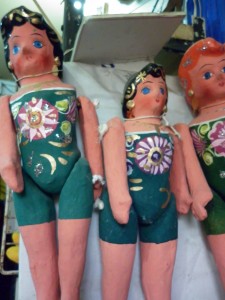 garbanceras, the forebearer of José Gaudalupe Posada’s famous catrinas and matracas, noisemakers used during Semana Santa’s Holy Sabbath to keep the demons at bay until Christ rises again on Easter Sunday.
garbanceras, the forebearer of José Gaudalupe Posada’s famous catrinas and matracas, noisemakers used during Semana Santa’s Holy Sabbath to keep the demons at bay until Christ rises again on Easter Sunday.
A Workshop is Born
“I am a storyteller by trade,” Álvaro says matter–of–factly. “And when I went looking for toys to use to illustrate my stories, everyone told me that the ones I wanted were no longer made. So we had to start making them ourselves.”
Álvaro and his partner Jazmín Juárez, a shy, round-faced girl who looks younger than she probably is, met when he was working for the Museo Universitario de Ciencias and she was there studying on a scholarship. She became his pupil then, but by Álvaro’s account has far surpassed his skills in her particular specialty — cartonería or papier-mâché sculpture.
“She’s the expert now,” he says, “She could run this shop without me, but I could never run it without her.”
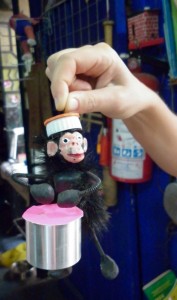 All the dragons and alebrijes and garbanceras are Jazmín’s work, spread out across a work bench surrounded by endless bottles of paint and straight–edge knives. Today she’s working on a giant chess piece for the outdoor chess board at a school. I ask her how she decided on papier–mâché.
All the dragons and alebrijes and garbanceras are Jazmín’s work, spread out across a work bench surrounded by endless bottles of paint and straight–edge knives. Today she’s working on a giant chess piece for the outdoor chess board at a school. I ask her how she decided on papier–mâché.
“It’s just want I liked the best,” she says, immediately drowning her timidity by picking up a toy and showing me what it can do.
These two toy makers opened up the Taller Tlamazcalli to the public only four years ago after several years working on commissioned pieces for museums and private collectors.
“What really struck us,” says Álvaro, “is that even though the toys are covered in sawdust, people like coming and seeing us working, I don’t know what it is … they like the smell of paint and glue. We decided to keep the shop a workshop.”
The Tlamaxcalli has been recognized by some of Mexico’s major cultural institutions like the Museo de Arte Popular and Museo de la Ciudad de México. They are the only surviving toy workshop in all of Mexico City.
A Personal Philosophy
“I would be angry if you gave me a beautiful toy and said ‘when you want to play with it, let me know and we’ll get it down.’ No, no, no, it has to be designed in a way that I can say, ‘I don’t want to play with this anymore’ (he tosses a noisemaker angrily onto the table) and then tomorrow, when I find it again and want to play, I pick it up and keep playing.”
This is almost word for word what he told us last time we came by the workshop. 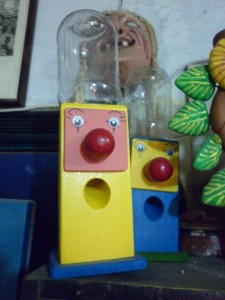 It summons up Álvaro’s attitude about toymaking. If you paint a toy too beautifully, he believes, you turn it into a piece of art and it loses its utility.
It summons up Álvaro’s attitude about toymaking. If you paint a toy too beautifully, he believes, you turn it into a piece of art and it loses its utility.
If you want, he will teach you how to make toys the way he does, but you’ll have to start with the basics. Both Álvaro and Jazmín give classes at their shop and at schools and organizations.
“Before you can make a chair, you have to learn to saw a straight line,” Álvaro says while demonstrating how to use what he calls a San José — an old–fashioned wire saw. (Did you know that this tool is Biblical, he asks us.)
All their students start out making papier-mâché (because you need few tools not because it’s easy, he insists) and then slowly move on to wooden toys, like the fighting boxers or the pull-apart wooden robot. And every person goes through the step-by-step process so that “when they’ve gone home, they’ve really learned something.”
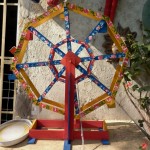 Outside, a wooden ferris wheel on a high table and a devil that hangs down with a sign reading “We make devils!” attract all kinds of people through the door, from kids with 10 pesos in their pockets to nostalgic parents to foreigners who want to take home a piece of “artesanía.” This last kind of customers irks Álvaro, but it’s unavoidable — regardless of how “rustic” he says he wants their finished products, they’re all still breathtakingly beautiful.
Outside, a wooden ferris wheel on a high table and a devil that hangs down with a sign reading “We make devils!” attract all kinds of people through the door, from kids with 10 pesos in their pockets to nostalgic parents to foreigners who want to take home a piece of “artesanía.” This last kind of customers irks Álvaro, but it’s unavoidable — regardless of how “rustic” he says he wants their finished products, they’re all still breathtakingly beautiful.
An Endangered Species
Jazmín is quick to assure me that she plans to carry on the toy-making tradition 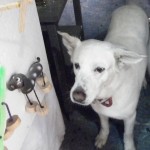 when I ask, but it’s still something that Álvaro worries about in his own whimsical way.
when I ask, but it’s still something that Álvaro worries about in his own whimsical way.
“You know what happened when those f***ing Crocs appeared? There went the guaracha makers,” he says referring to sandals made once upon a time in Mexico out of used tires. “You see these beautifully dressed indigenous people wearing Dallas Cowboys hats and you know why? There are no more sombrero makers. Que lástima! If you’re looking for toys and you ask around someone might say, ‘oh, yes, Don Jorge still makes toys’ … and he’s 98 years old.”
He calls it an oral tradition — befitting of his personality I would say — and believes in training the next generation of toy makers, but is not interested in writing an instructional manual or copying down his patterns.
“If you want to make a duck, go ahead, draw a duck. How? However you imagine it in your head,” he tells me.
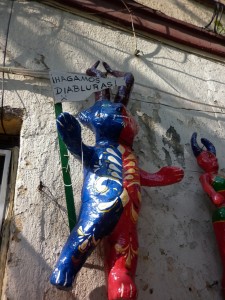 After years of pouring over books about toys, watching old movies and sifting through jail archives (at one time in Mexico most childrens’ toy were made and sold by inmates) both Álvaro and Jazmín still believe that creativity and practice are the only things that will make you good.
After years of pouring over books about toys, watching old movies and sifting through jail archives (at one time in Mexico most childrens’ toy were made and sold by inmates) both Álvaro and Jazmín still believe that creativity and practice are the only things that will make you good.
“It’s dignified, the work we do,” he says proudly. “We are an endangered species; it’s your job to make sure we don’t disappear.”
Click here to subscribe via RSS
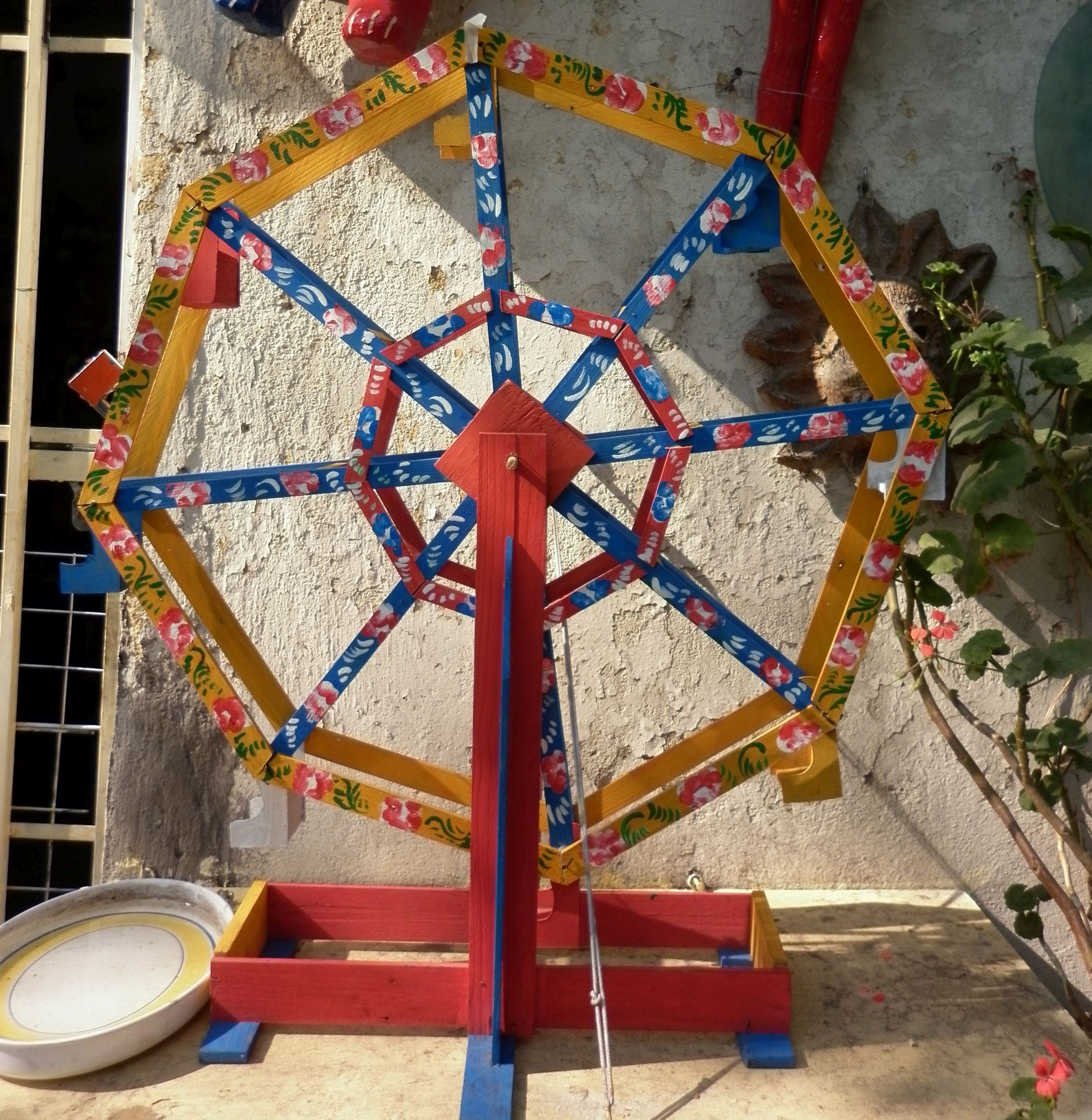
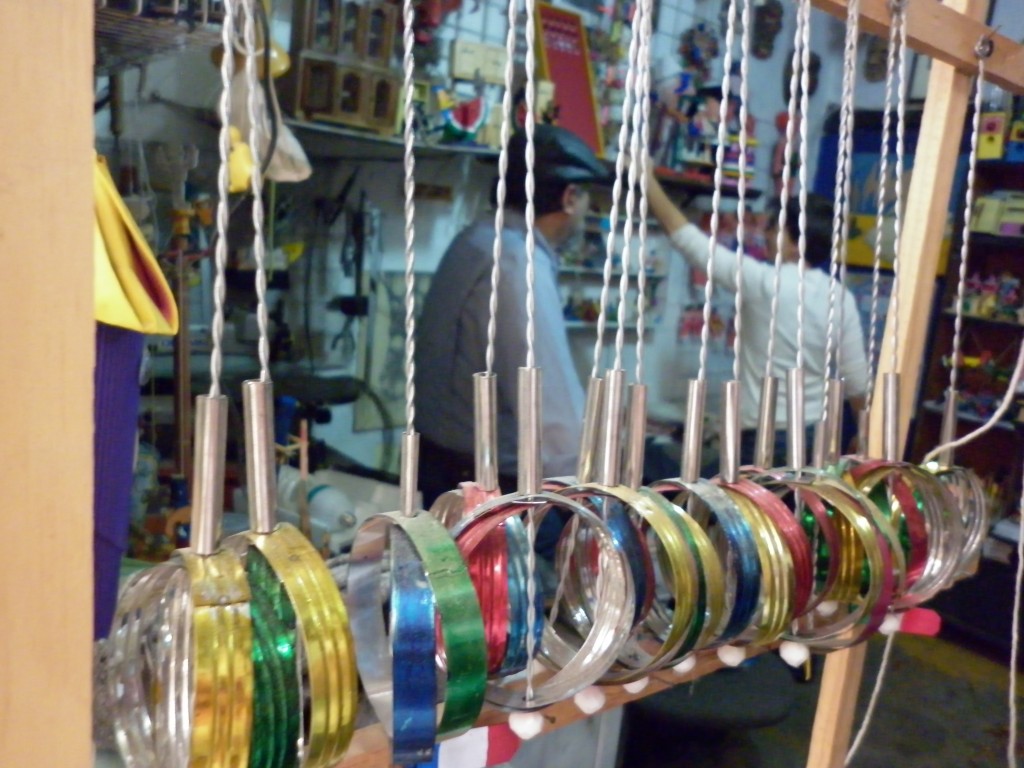

Have any arguments about me sharing this on twitter?
Not at all… share away.
Lydia, que bonito!!!! nos encantó, muchas gracias. Esperamos verte de nuevo en el taller. No tenemos tus datos de contacto, ojalá nos los puedas hacer llegar. En facebook estamos como Taller Tlamaxcalli.
Que Bueno que les gusto. Nos vemos pronto en el taller!